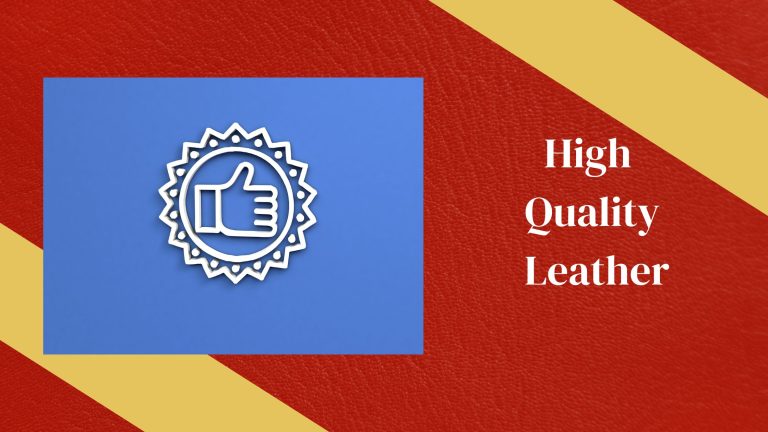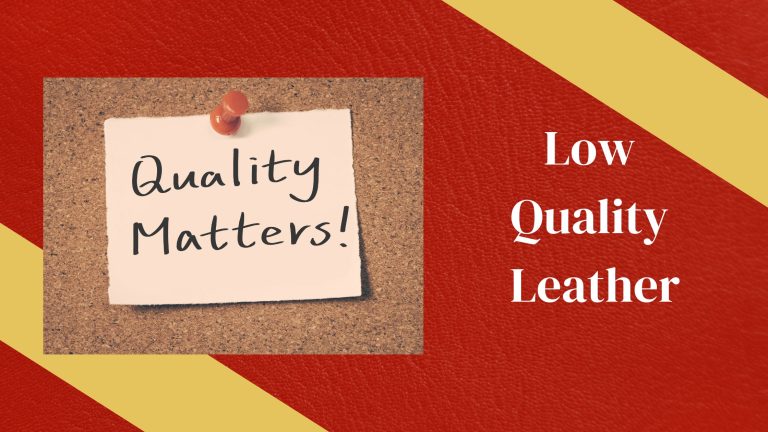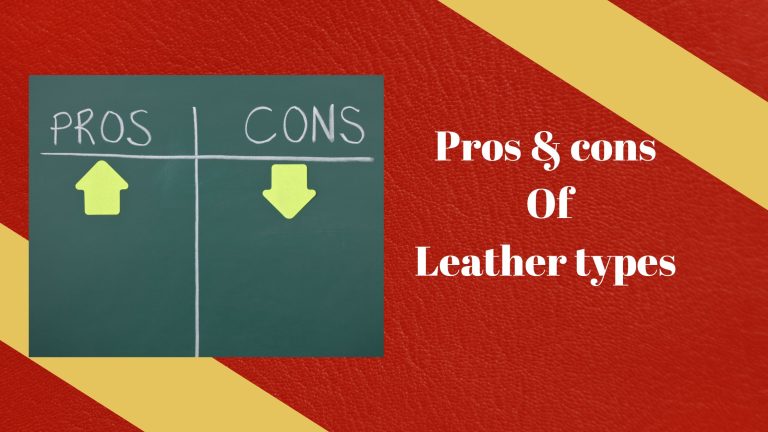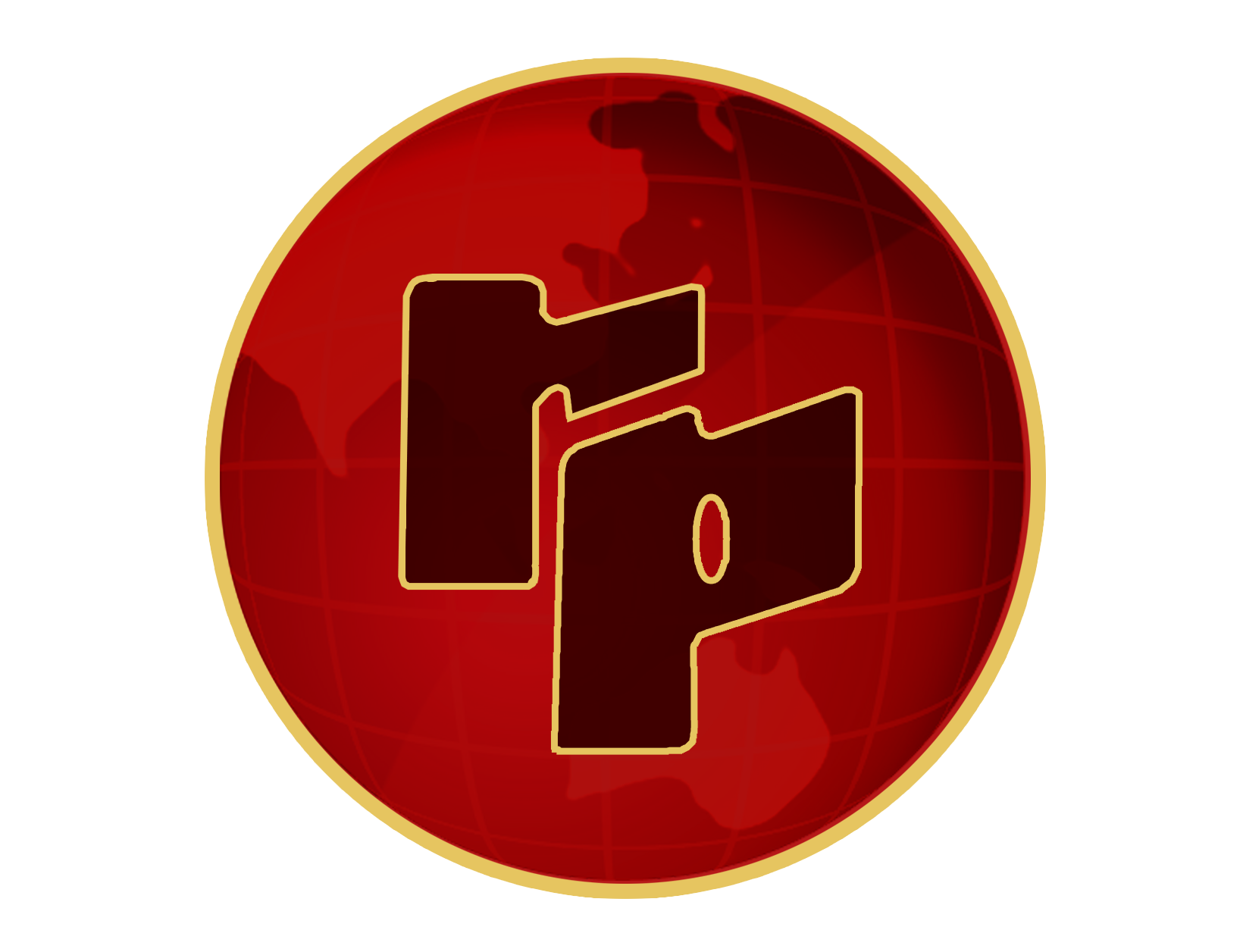Leather is a versatile product that is enjoyed by people in diverse forms—belts, bags, or jackets. It’s also widely used in cars and furniture to provide added comfort for users.
Now, you must be aware of the different leather goods and accessories available.
But are you aware of the types of leather used to create those leather products?
If yes, then good for you!
If not, you will learn much about leather and its types in this blog.
So, in this blog, we will discuss high-quality and low-quality leather available, the types of products made out of them, and finally some pros and cons of each leather type for your better understanding of the leather.
High-Quality Leather vs. Low-Quality Leather
High-quality leather and low-quality leather are both made from animal hides and skin. But there is a significant difference between the two.
High-quality leather products are purely made from animal skin and hides for durability and lifetime usage. Whereas, low-quality leather products are made from leather scraps, making them prone to damage.

High-quality leather
High-quality leather comes in different types—full grain leather, top grain leather, corrected grain leather, and many more. Let’s discuss each of them one by one.
Full-Grain Leather:
Full-grain leather is made from the top layer of the animal skin. It has the original grain and imperfections to give it a versatile look.
Characteristics:
- Durability: The products made from this type of leather are highly durable due to natural grains that add strength and resistance to wear and tear.
- Aging: This leather looks better with age as it develops patina on the leather products over time.
- Natural marks: These leather types have natural marks from the animal skin that increase the product’s authenticity and charm.
Uses:
- Luxury Accessories: These leather types are commonly used in luxury accessories like high-quality belts, bags, and wallets.
- Premium footwear: They are often used in premium shoes and boots due to their durability, which gives products a distinguishing feature.
- Furniture: They are used as holsters in furniture like chairs and sofas to impart comfort and a luxurious feel.
Pros:
- Durability: Full-grain leather is popular for its durability feature that protects the leather goods from wear and tear for a long time.
- Better with age: They develop a soft sheen called patina on them with use that gives them a beautiful, natural appearance.
- Water resistance: As they are made from the top layer of animal hides, they naturally have oil absorption characteristics that make them more resistant to water compared to other leather products.
Cons:
- Imperfections: They have blemishes like nail scratches or scars from the animal skin that are left untreated during the tanning process. Thus, carrying imperfections on the leather products made from full grain.
- Weight: They are made from the thick skin of animals, making the products a little heavier than the products made from other leather types.
- Price: Full-grain leather products are a little pricey because it becomes a daunting task for the manufacturers to find animal hides that are free from any blemishes.
Top-Grain Leather:
Top-grain leather products are made from the layer just below the full-grain leather.
Difference between Top-Grain Leather and Full-Grain Leather
Feature | Top-Grain Leather | Full-Grain Leather |
Surface | Sanded and buffed to remove imperfections | Retains natural texture and imperfections |
Durability | Slightly less durable than full-grain | Highly durable and resistant to wear |
Appearance | More uniform, but less natural character | Unique and rich appearance with natural markings |
Comfort | Generally comfortable but may not develop patina | Breathable and develops a beautiful patina over time |
Cost | Generally less expensive than full-grain | Typically more expensive due to higher quality |
Use | Often used in everyday furniture and accessories | Commonly used in high-end furniture, luxury goods, and premium footwear |
Common Applications:
- Accessories: They are commonly used in accessories like handbags, belts, and wallets due to their durability and smooth finish.
- Automobile Interiors: They are free from imperfections, which gives their surface a smooth and shiny finish. Thus, it is used in automobile interiors to give a polished appearance and withstand daily wear and tear.
- Furniture: They are often used in sofas, chairs, and other furniture due to their durable nature and elegant appearance.
Corrected Grain Leather:
Corrected grain leather is made from the lower layers of a hide, with the surface sanded and embossed to create a smooth, uniform texture.
Processing and Finish:
- Hide Material: It starts with selecting the hide material. Generally, low-quality animal hides with imperfections are selected.
- Sanding and Buffing: They are heavily sanded and buffed to remove any blemishes or inconsistencies from the material to give them a smooth look.
- Embossing: A uniform grain pattern is embossed into the leather using heated metal plates or rollers to mimic the look of higher-quality leather.
- Dyeing: The leather is then dyed to achieve a consistent color throughout the material.
- Finishing: A finishing layer is applied to the leather to increase its durability and give a glossy look to the surface.
Ideal Uses:
- Office supplies: These are used in products like desk pads or organizer covers due to their refined look.
- Handbags and accessories: They are used to make wallets, handbags, and belts, giving them a finished look.
- Footwear: They are often used in footwear to protect them from wear and tear.
Benefits:
- Durability: A protective layer is applied to corrected grain leather, which increases its durability and protects it from scratch, stains, and general wear and tear.
- Affordable: They are more affordable than full-grain and top-grain leather while still offering a good balance of quality and appearance.
- Ease of maintenance: They have a smooth, coated surface and are easier to clean compared to leathers having natural imperfections.
Suede and Nubuck Leather:
Suede leather is made from the underside of the hide, which gives it a soft and smooth texture. While nubuck leather is made from the outer layer of the hide, which gives it a soft and velvety texture.
Soft Textures:
- Velvety feel: Suede has a soft, plush texture that comes from the underside of the hide being sanded to create a napped surface.
- Smooth touch: They are often heavily sanded to give their surface a smooth, velvety feel.
- Denser feel: Nubuck feels denser and has a more pronounced grain, offering a refined texture.
Unique Features:
- Luxurious look: Suede is often used in high-end fashion items and furniture for their refined appearance.
- Variety of colors: Suede is often available in a variety of colors and is used in diverse fashion and accessory products.
- Rich appearance: Nubuck has a velvety feel combined with a subtle grain pattern, giving it a sophisticated look.
- Color and Finish: Nubuck is also available in various colors, often with a matte or lightly polished finish, enhancing its visual appeal.
Care Tips:
- Regular brushing: Take a leather brush and gently brush it in one direction to lift the dirt from the surface. Avoid harsh brushing to maintain its grains and texture.
- Avoid water: Keep suede and nubuck leather away from water as it can stain the leather. If in contact with water, let it air dry and then gently brush the surface.
- Storage: Always store these leather products in a cool and dry place, away from the sunlight, to prevent color fading or drying of the leather surface.
Uses:
- Footwear: They are popularly used in shoes and boots due to their soft surface and durable characteristics.
- Accessories: They are found in handbags, wallets, and belts where a soft and plush texture is required.
- Apparel: They are used in jackets, shirts, and trousers, giving them a luxurious feel.
Exotic Leathers:
Exotic leathers are made from the skins of alligators, ostriches, pythons, and crocodiles, each having its own unique texture and pattern.
Types:
- Alligator leather is derived from the skin of alligators, primarily American alligators.
- Ostrich leather comes from the skin of ostriches, known for its distinctive quill bumps.
- Python leather is sourced from the skin of large pythons, typically Burmese or reticulated pythons.
- Crocodile leather is obtained from crocodiles, particularly saltwater or Nile crocodiles.
Specialty Applications and Costs:
- Alligator Leather
Specialty Applications:
- Luxury Handbags: High-end fashion brands often use alligator leather for exclusive handbags.
- High-end Footwear: Used in designer shoes and boots for a luxurious look.
- Premium Accessories: Includes belts, wallets, and watch straps.
- Upholstery: Used in bespoke furniture and luxury car interiors for a distinctive appearance.
Costs:
- High-end: Alligator leather is among the most expensive due to its rarity and the extensive processing required. Prices can range from $1,000 to over $5,000 per square foot, depending on the quality and size of the hide.
2. Ostrich Leather
Specialty Applications:
- Designer Fashion: Common in high-end handbags, shoes, and belts.
- Custom Accessories: Often used for luxury wallets, briefcases, and watch straps.
- Furniture: Featured in bespoke and high-end upholstery, adding a unique touch to interiors.
Costs:
- Moderate to High: Ostrich leather is generally less expensive than alligator but still commands a premium. Prices typically range from $300 to $1,500 per square foot, depending on quality and finish.
3. Python Leather
Specialty Applications:
- Fashion Accessories: Used in trendy handbags, shoes, belts, and wallets.
- Statement Pieces: Popular for bold fashion statements and custom designs.
- Luxury Goods: Employed in high-end fashion collections and bespoke items.
Costs:
- Moderate to High: Python leather prices vary widely, typically ranging from $200 to $1,000 per square foot, influenced by the size and complexity of the pattern.
4. Crocodile Leather
Specialty Applications:
- Luxury Handbags and Shoes: Often used in designer accessories for their elegance and durability.
- High-end Belts: Favored for their distinctive scale pattern and strength.
- Upholstery: Used in luxury furniture and automotive interiors for an upscale look.
Costs:
- High-End: Similar to alligator, crocodile leather is expensive, with prices ranging from $1,000 to $4,000 per square foot, depending on the grade and origin of the leather.

Low-quality leather
As we discussed the high-quality leather, in this section we will discuss low-quality leather like bonded leather and split leather.
Bonded Leather:
Bonded leather is made from a combination of genuine leather scraps and fibers, which are then bonded together using adhesives and processed into sheets or rolls.
Quality:
Products made from these types of leather are generally of low quality and less durable in nature, as they contain only 10–20% of the real leather.
Characteristics:
- Appearance: They mimic the appearance of real leather but lack the aging and durability characteristics of high-quality leather.
- Durable: Bonded leather is less durable compared to high-quality leather, and its surface wears off over time due to excessive usage.
- Cost: They are cheaper than top-grain or full-grain leather and come at an affordable price.
Split Leather:
Split leather is made from the lower layers of a hide after the top-grain or full-grain layer is removed.
Quality:
Split leather is derived after the removal of the full-grain or top-grain layer of the animal hides, which makes its quality less when compared to high-quality leather.
Characteristics:
- Surface: They are highly sanded and buffed, which makes their surface soft and smooth.
- Durable: Split leather’s natural strength is missing, which makes it more prone to damage.
- Cost: They are cheaper than top-grain or full-grain leather due to the low-quality layer used and come at an affordable price.
Types of Products Made from Leather
Leather has varied characteristics like durability and flexibility, which makes it a go-to material for manufacturers to produce a wide variety of products.
1. Clothing:
Leather is widely used for making stylish apparel like jackets, coats, gloves, trousers, and skirts due to its durable and warming features.
2. Footwear:
Leather is popular for its luxurious appearance and is used for making high-end footwear like shoes, boots, and sandals.
3. Accessories
Leather is highly durable and used by manufacturers in producing daily-use accessories like handbags, belts, wallets, and keychains.
4. Furniture-
Leather has a comfort feature and is used as upholstery in chairs and sofas and high-end furniture pieces like beds and headboards.
5. Small Goods:
Leather’s durability and protective qualities make it an ideal choice for creating items like phone cases, passport holders, and business card holders.

Pros and Cons of Each Leather Type
Now that you are exposed to different types of leather, both high-quality and low-quality, you might be confused about which leather is best in terms of its durability, appearance, and price.
In this section, we have mentioned all leather types from high to low in all 3 parameters to help you make an informed decision when you shop for leather products in the future.
1. Durability:
- Full-Grain Leather: They are the most durable due to their natural strength and lack of surface treatments.
- Top-Grain Leather: They are durable and resistant to wear but not as tough as full-grain.
- Exotic Leather: They are generally durable but vary by type (e.g., alligator, ostrich).
- Nubuck Leather: They are durable like top-grain but less resistant to stains and water.
- Corrected Grain Leather: They have moderate durability and are less resilient due to surface treatments.
- Split Leather: They are less durable due to their lower position in the hide.
- Suede Leather: They are the least durable and prone to staining and water damage.
- Bonded Leather: They are the least durable and tend to peel and degrade over time.
2. Appearance:
- Full-Grain Leather: They have the best appearance, retain natural markings, and develop a rich patina with time.
- Exotic Leather: They have a unique and luxurious appearance with distinct patterns and textures.
- Nubuck Leather: They have a soft, velvety texture with a refined look.
- Top-Grain Leather: They are smooth and polished; more uniform than full-grain but still high-quality.
- Corrected Grain Leather: They have a uniform appearance due to surface treatments and can look less natural.
- Suede Leather: They are attractive and soft, but can look less polished and more matte.
- Split Leather: They have a more artificial appearance due to sanding and coating.
- Bonded Leather: They often look synthetic and less authentic.
3. Price:
- Full-Grain Leather: They are the most expensive due to their high quality and processing.
- Exotic Leather: They are expensive and vary widely based on the type and rarity.
- Nubuck Leather: They are high-priced due to the quality of the hide and special processing.
- Top-Grain Leather: They are less expensive than full-grain but still considered a premium product.
- Corrected Grain Leather: They are more affordable than full-grain and top-grain.
- Split Leather: They have low cost due to their lower quality.
- Suede Leather: They are moderately priced and often less expensive than nubuck and top-grain.
- Bonded Leather: They are the least expensive as they are made from scraps and synthetic materials.
The Bottom Line
The market is filled with products made of different types of leather. The leather quality is classified as high-quality leather such as full-grain leather, top-grain leather, or exotic leather, and low-quality leather like bonded leather and split leather. The appearance, durability, and pricing of each leather type are different from the other due to their extraction from animal hides and tanning process. Each leather has unique characteristics, pros, and cons and is widely used in manufacturing leather products like apparel, accessories, small goods, and automobile interiors.
